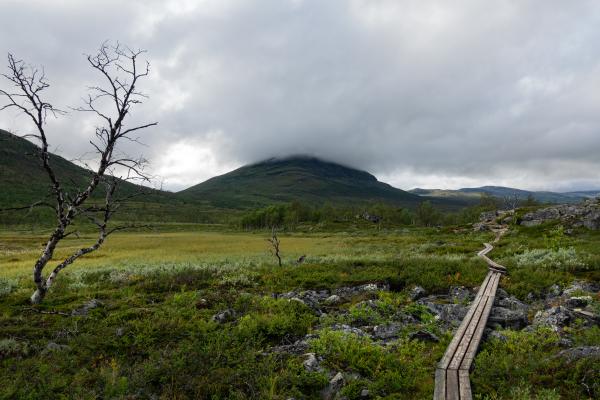New Insights into the Microbial Drivers of Methane Flux in Wetlands

In a study published in Nature Communications, researchers provided critical insights into the microbial interactions driving methane emissions in freshwater wetlands, a significant natural source of this potent greenhouse gas. Among the researchers involved were The Ohio State University co-authors Associate Professor of Microbiology Virginia Rich, principal investigator at the Byrd Center, and Gil Bohrer from the Department of Civil, Environmental, and Geodetic Engineering.
The study connects microbiology, engineering, and climate science to advance the understanding of methane cycling across different wetland ecosystems.
The research team integrated different types of data—including information on which microbes were present (from 16S rRNA sequencing), what genes they carry (metagenomics), which genes are active (metatranscriptomics), and how much methane the wetlands released each year from nine wetlands in the U.S. and Sweden. This comprehensive dataset was used to construct the Multi-Omics for Understanding Climate Change (MUCC) v2.0.0 database. This publicly available resource links microbial community composition to methane emissions and highlights the intricate networks of methane-cycling microorganisms responsible for carbon decomposition.
The findings revealed significant differences in microbial interactions between wetland types, with marshes and swamps hosting more diverse and efficient microbial communities than bogs and fens. Importantly, the research uncovered that methane flux, the rate at which methane is exchanged between the Earth's surface and the atmosphere in wetlands, is influenced by the structure of microbial metabolic networks.
Specifically, wetlands with simpler microbial networks, where there are fewer interactions between methanogens (microbes that produce methane) and methanotrophs (microbes that consume methane), tend to have higher methane emissions. This suggests that reduced microbial connectivity limits methane consumption, allowing more methane to escape into the atmosphere. This dynamic was particularly evident in the most methane-intensive sites, like the Prairie Potholes in the U.S.
The study identified eight methane-cycling microbial genera shared across wetlands, with a particular focus on Methanoregula, a methanogen identified as a "hub" species within microbial networks, which emerged as a central player in high methane-emitting wetlands. This organism dominated microbial communities across diverse wetlands and exhibited unique metabolic pathways, such as methylotrophic methanogenesis, which is likely critical to its ability to thrive in high-emission environments.
The study showed that wetlands with a higher proportion of Methanoregula in their microbial communities were consistently associated with elevated methane emissions, suggesting that this microbe plays a pivotal role in methane flux.
The MUCC database is one of the most comprehensive multi-omics resources for wetland research. It is expected to aid future studies of methane emissions by reducing the need for site-specific data collection. Instead, it provides a robust framework for linking microbial activity to greenhouse gas emissions across diverse wetland ecosystems.
This research marks a critical step forward in understanding methane emissions, highlighting the importance of microbial networks in driving these processes. It also offers actionable insights for improving global methane budgets and informing climate mitigation strategies. By integrating microbial knowledge into predictive climate models, this work opens new avenues for managing and mitigating methane emissions from natural ecosystems.
Contributions by various researchers demonstrate the vital role of interdisciplinary collaboration in tackling global challenges like climate change, making this study a significant advancement in wetland research and methane flux prediction.
Visit Nature Communications to learn more about the study.
